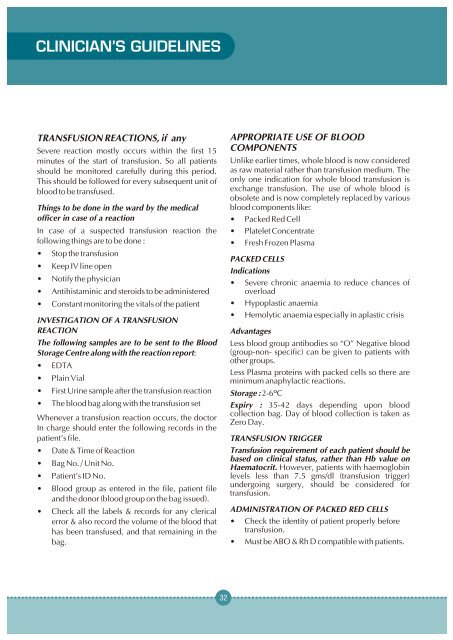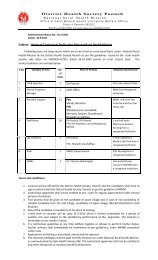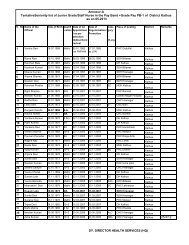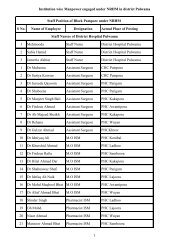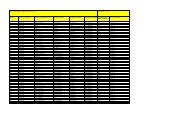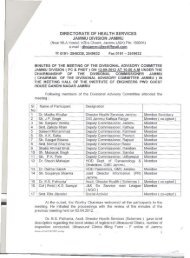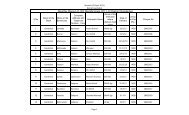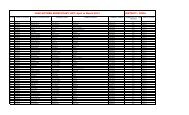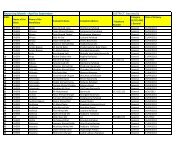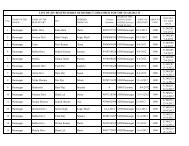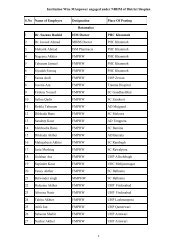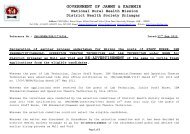Guidelines for Setting Up Blood Storage Centres - NRHM Tripura
Guidelines for Setting Up Blood Storage Centres - NRHM Tripura
Guidelines for Setting Up Blood Storage Centres - NRHM Tripura
You also want an ePaper? Increase the reach of your titles
YUMPU automatically turns print PDFs into web optimized ePapers that Google loves.
CLINICIAN'S GUIDELINES<br />
TRANSFUSION REACTIONS, if any APPROPRIATE USE OF BLOOD<br />
Severe reaction mostly occurs within the first 15 COMPONENTS<br />
minutes of the start of transfusion. So all patients Unlike earlier times, whole blood is now considered<br />
should be monitored carefully during this period. as raw material rather than transfusion medium. The<br />
This should be followed <strong>for</strong> every subsequent unit of only one indication <strong>for</strong> whole blood transfusion is<br />
blood to be transfused.<br />
exchange transfusion. The use of whole blood is<br />
obsolete and is now completely replaced by various<br />
Things to be done in the ward by the medical blood components like:<br />
officer in case of a reaction • Packed Red Cell<br />
In case of a suspected transfusion reaction the • Platelet Concentrate<br />
following things are to be done : • Fresh Frozen Plasma<br />
• Stop the transfusion<br />
PACKED CELLS<br />
• Keep IV line open<br />
Indications<br />
• Notify the physician<br />
• Severe chronic anaemia to reduce chances of<br />
• Antihistaminic and steroids to be administered overload<br />
• Constant monitoring the vitals of the patient • Hypoplastic anaemia<br />
INVESTIGATION OF A TRANSFUSION<br />
• Hemolytic anaemia especially in aplastic crisis<br />
REACTION<br />
Advantages<br />
The following samples are to be sent to the <strong>Blood</strong> Less blood group antibodies so “O” Negative blood<br />
<strong>Storage</strong> Centre along with the reaction report: (group-non- specific) can be given to patients with<br />
other groups.<br />
• EDTA<br />
Less Plasma proteins with packed cells so there are<br />
• Plain Vial minimum anaphylactic reactions.<br />
• First Urine sample after the transfusion reaction <strong>Storage</strong> : 2-6ºC<br />
• The blood bag along with the transfusion set Expiry : 35-42 days depending upon blood<br />
collection bag. Day of blood collection is taken as<br />
Whenever a transfusion reaction occurs, the doctor<br />
Zero Day.<br />
In charge should enter the following records in the<br />
patient’s file.<br />
TRANSFUSION TRIGGER<br />
• Date & Time of Reaction<br />
Transfusion requirement of each patient should be<br />
based on clinical status, rather than Hb value on<br />
• Bag No. / Unit No.<br />
Haematocrit. However, patients with haemoglobin<br />
• Patient’s ID No. levels less than 7.5 gms/dl (transfusion trigger)<br />
•<br />
undergoing surgery, should be considered <strong>for</strong><br />
<strong>Blood</strong> group as entered in the file, patient file<br />
transfusion.<br />
and the donor (blood group on the bag issued).<br />
• Check all the labels & records <strong>for</strong> any clerical ADMINISTRATION OF PACKED RED CELLS<br />
error & also record the volume of the blood that • Check the identity of patient properly be<strong>for</strong>e<br />
has been transfused, and that remaining in the transfusion.<br />
bag.<br />
• Must be ABO & Rh D compatible with patients.<br />
32


